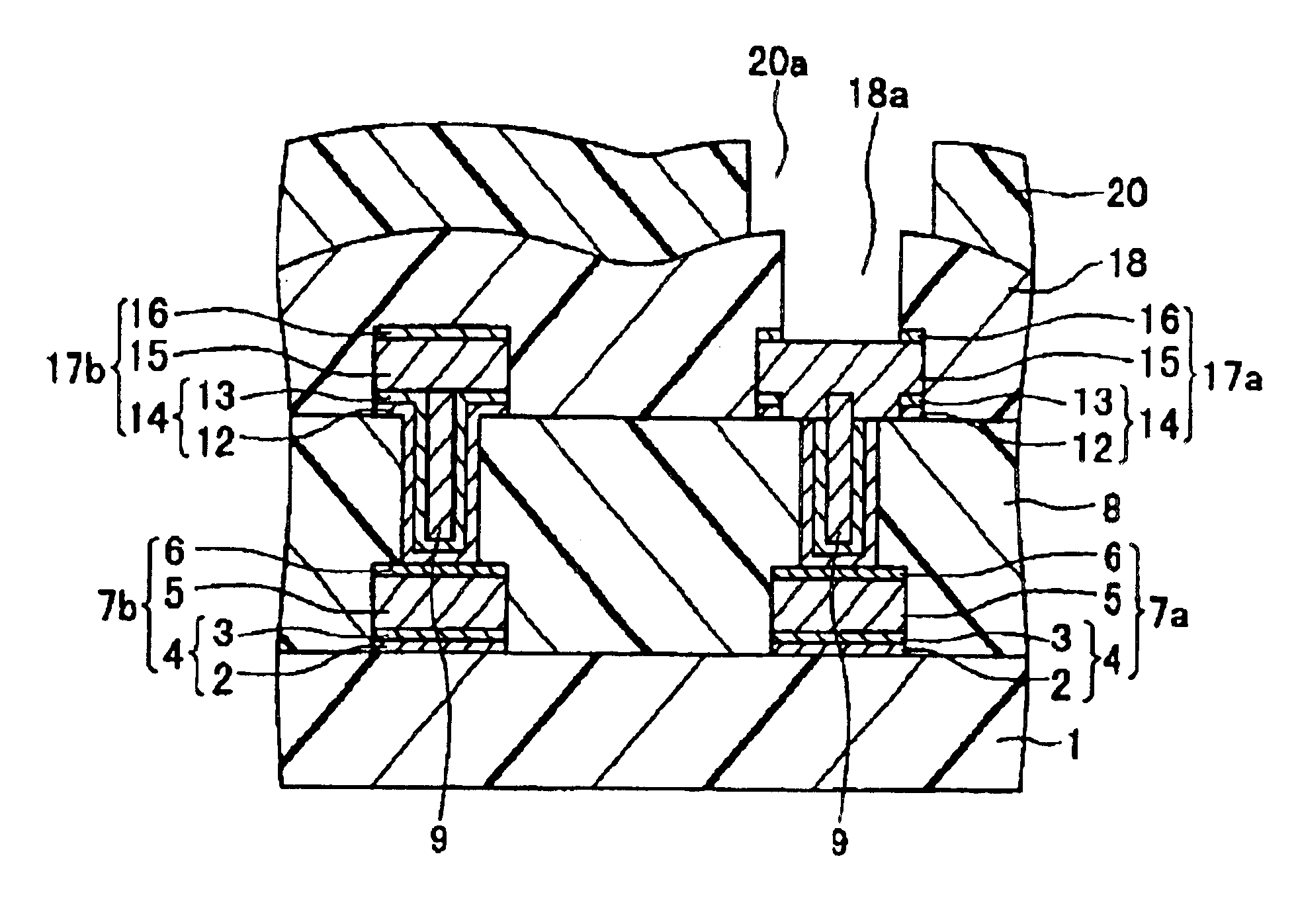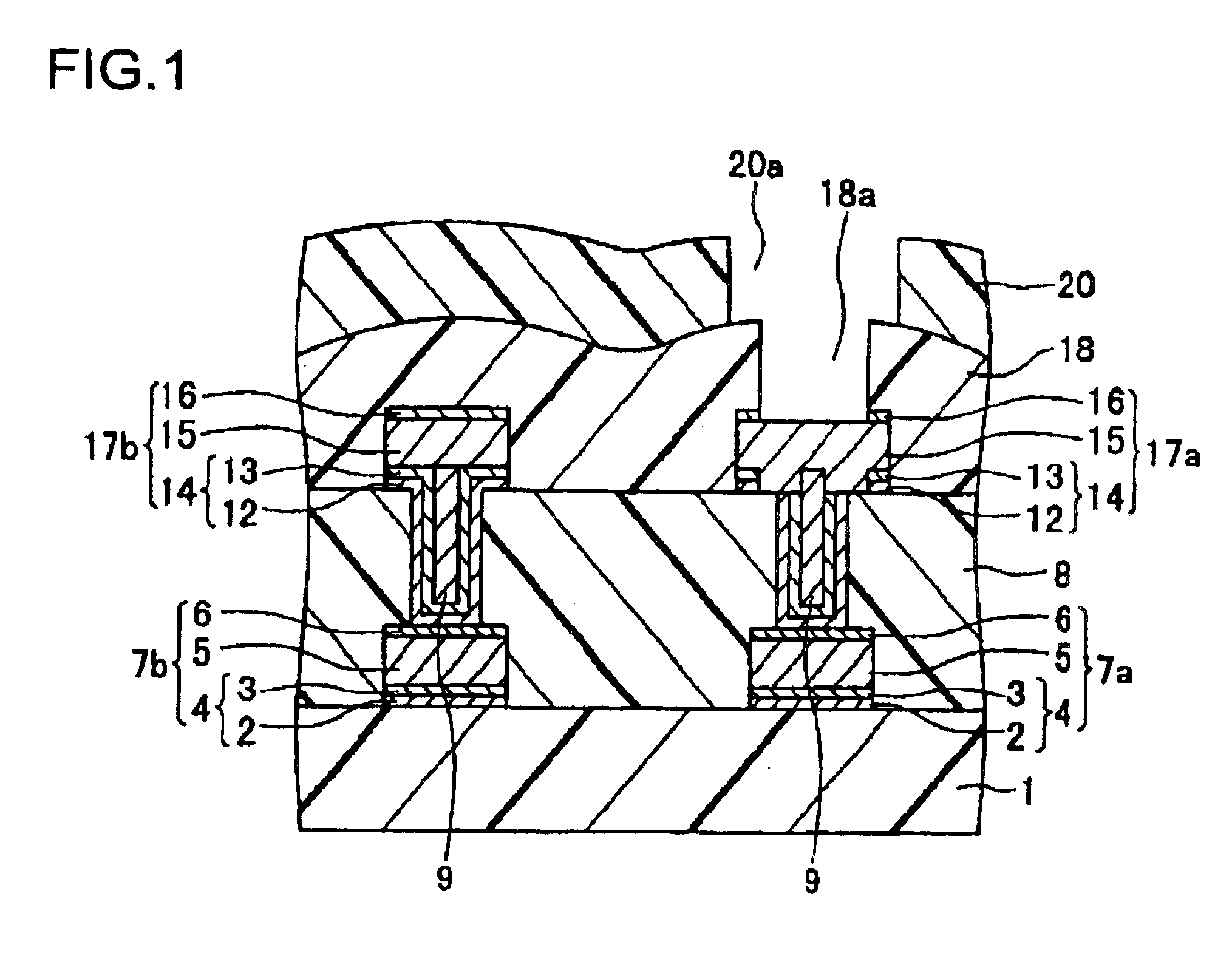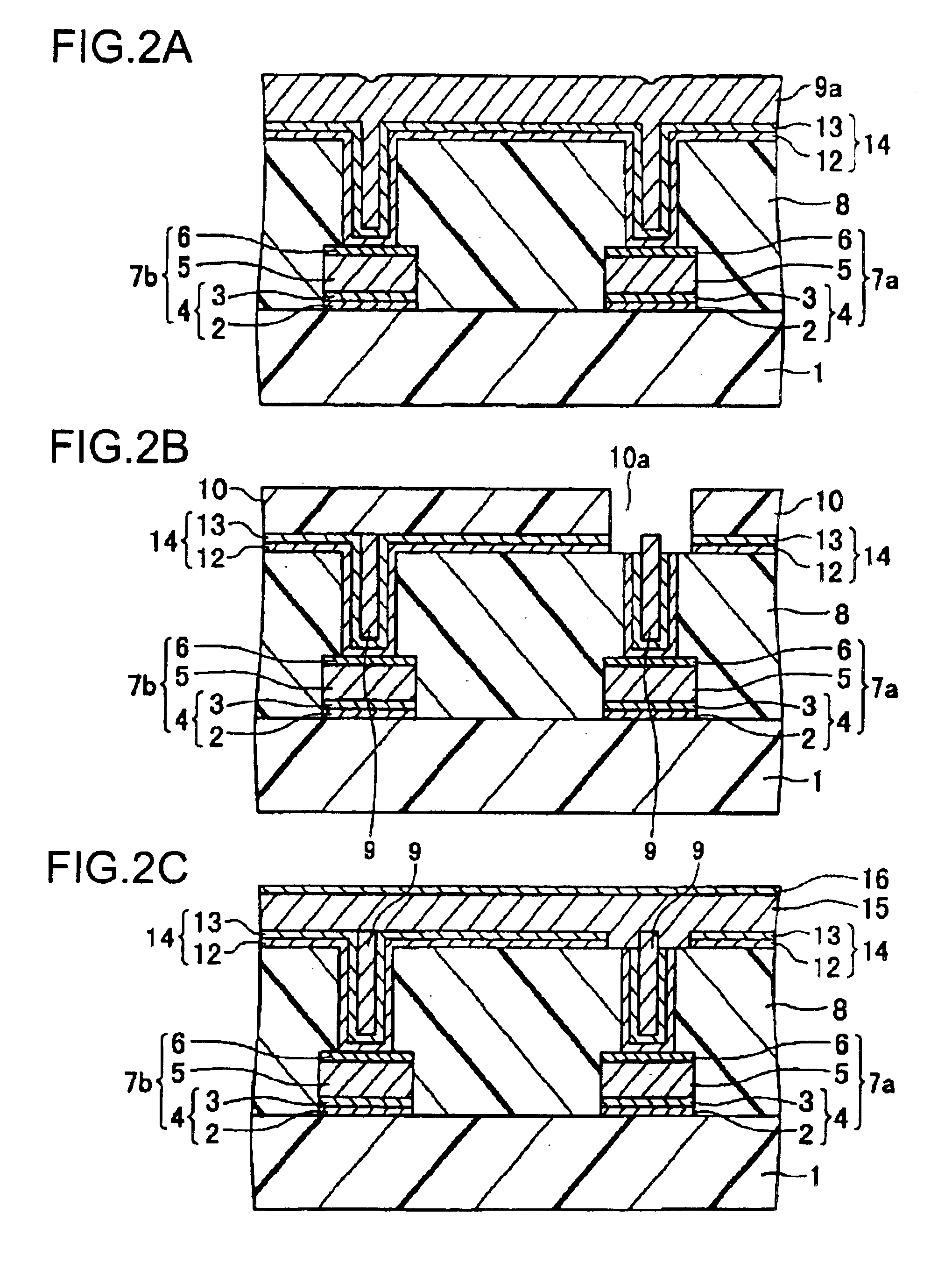Semiconductor device and manufacturing method thereof
a technology of semiconductor devices and manufacturing methods, applied in semiconductor devices, semiconductor/solid-state device details, electrical apparatus, etc., can solve problems such as achieve the effects of suppressing pad peeling increasing the area of the top surface or the bottom surface of improving the adhesion between the bonding pad portion and the insulating film
- Summary
- Abstract
- Description
- Claims
- Application Information
AI Technical Summary
Benefits of technology
Problems solved by technology
Method used
Image
Examples
first embodiment
FIG. 1 is a cross-sectional view showing a semiconductor device of a first embodiment according to the present invention. This semiconductor device has bonding pad portions.
On an insulating film 1, first Al alloy wires 7a are 7b are formed. The first Al alloy wires 7a and 7b are each formed of a barrier metal layer 4, a first Al alloy film 5, and a antireflection film 6 provided in that order from the bottom. The barrier metal layer 4 is formed of a Ti film 2 and a TiN film 3 provided thereon.
On the first Al alloy wires 7a and 7b and the insulating film 1, an interlayer insulating film 8 containing Si is formed. In this interlayer insulating film 8, via holes (connecting holes) are formed at positions located on the first Al alloy wires 7a and 7b. Inside the connecting hole and on the interlayer insulating film 8, barrier metal layers 14 are formed. The barrier metal layer 14 is composed of a Ti film 12 and a TiN film 13 provided thereon.
On the barrier metal layer 14 provided in eac...
second embodiment
FIG. 4 is a cross-sectional view of a semiconductor device according to the present invention, the same reference numerals of the constituent elements described above designate the same constituent elements in this embodiment, and different constituent elements will only be described.
On the inside surface of the via hole (connecting hole) formed in the interlayer insulating film 8, a sidewall 21 made of a W film is formed with the barrier metal layer 14 provided therebetween.
The second Al alloy film (or a conductive film) 15 is formed on the side wall 21, inside the connecting hole, and on the barrier metal layer 14, and on the second Al alloy film 15, the antireflection film 16 is formed. The antireflection film 16, the second Al alloy film 15, and the barrier metal layer 14 form the bonding pad portion 17a.
That is, the bonding pad portion 17a is electrically connected to the first Al alloy wire 7a via the side wall 21 and the second Al alloy film 15 provided in the via hole.
A par...
third embodiment
FIG. 7 is a cross-sectional view of a semiconductor device according to the present invention. The same reference numerals of the constituent elements described above designate the same constituent elements in this embodiment, and different constituent elements will only be described.
On the W plug 9, the bonding pad portion 17a is formed. On the bonding pad portion 17a and the interlayer insulating film 8, the passivation film 18 is formed, and the opening portion 18a is formed in this passivation film 18 at a position located on the bonding pad portion 17a. The polyimide film 20 is formed on the passivation film 18, and the opening portion 20a is formed in this polyimide film 20. This opening portion 20a and the opening portion 18a described above form the pad opening portion. This pad opening portion is not located over the W plug 9 and is located at a position on the bonding pad portion 17a, which position is adjacent to the W plug 9 or in the vicinity thereof.
FIGS. 8(A) to (C) a...
PUM
| Property | Measurement | Unit |
|---|---|---|
| conductive | aaaaa | aaaaa |
| insulating | aaaaa | aaaaa |
| stress | aaaaa | aaaaa |
Abstract
Description
Claims
Application Information
 Login to View More
Login to View More - R&D
- Intellectual Property
- Life Sciences
- Materials
- Tech Scout
- Unparalleled Data Quality
- Higher Quality Content
- 60% Fewer Hallucinations
Browse by: Latest US Patents, China's latest patents, Technical Efficacy Thesaurus, Application Domain, Technology Topic, Popular Technical Reports.
© 2025 PatSnap. All rights reserved.Legal|Privacy policy|Modern Slavery Act Transparency Statement|Sitemap|About US| Contact US: help@patsnap.com



